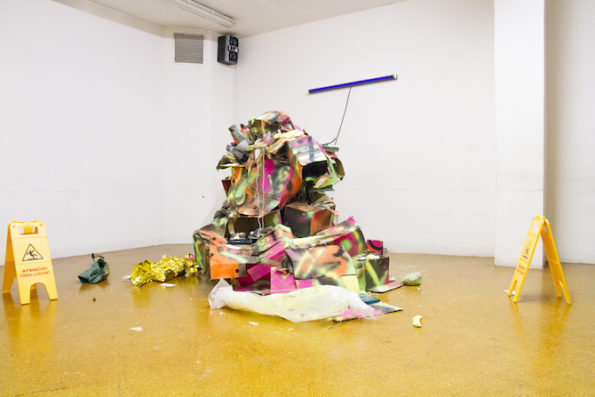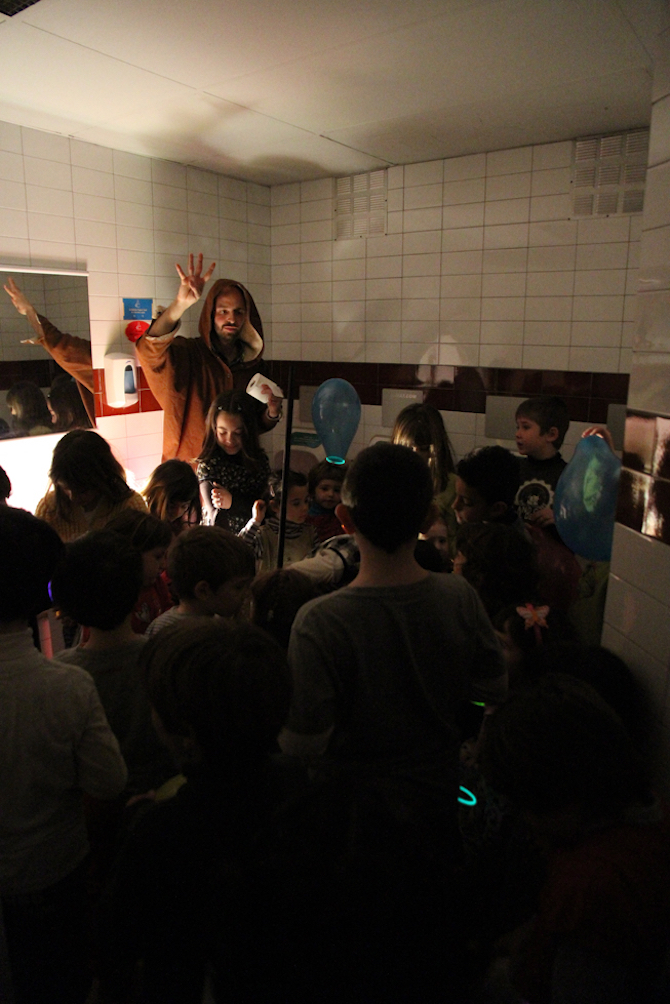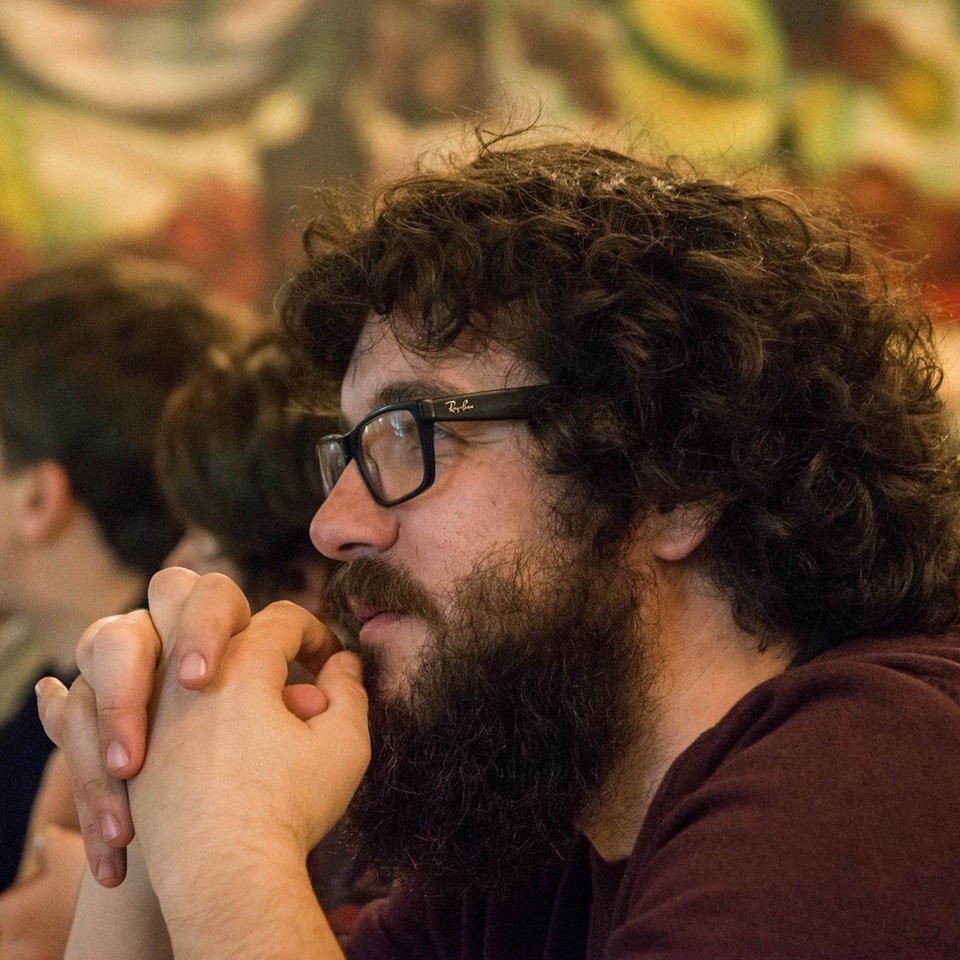Search
To search for an exact match, type the word or phrase you want in quotation marks.
A*DESK has been offering since 2002 contents about criticism and contemporary art. A*DESK has become consolidated thanks to all those who have believed in the project, all those who have followed us, debating, participating and collaborating. Many people have collaborated with A*DESK, and continue to do so. Their efforts, knowledge and belief in the project are what make it grow internationally. At A*DESK we have also generated work for over one hundred professionals in culture, from small collaborations with reviews and classes, to more prolonged and intense collaborations.
At A*DESK we believe in the need for free and universal access to culture and knowledge. We want to carry on being independent, remaining open to more ideas and opinions. If you believe in A*DESK, we need your backing to be able to continue. You can now participate in the project by supporting it. You can choose how much you want to contribute to the project.
You can decide how much you want to bring to the project.

While it’s true that the principal habitat of art continues to be dominated by the exhibition space, it is also true we can’t understand the nature of exhibitions without bearing in mind their various temporalities. Dynamics give rise to another type of relations between the agents involved (artists, curators, mediators, coordinators) but also other types of connections with their users. In short, it is the temporalities of exhibitions, and not the spaces, that can convert the consumption of art into a singular, and even extraordinary, experience.
In the case of Antoni Hervàs (Barcelona, 1981), these temporalities expand in two complementary ways. On the one hand, his drawing, a central axis of his work, grows and amplifies through theatrical and performative incursions. On the other, his practice as an artist incorporates an educational role that leads to the development of multiple workshops on visual narratives and the construction of a line of pedagogical investigation that advances in parallel to his career as an artist. We talk to him about the educational workshops he has been organising since 2013 in the setting of Sant Andreu Contemporani: Fénix y el Camino del Fuego, Fénix y la Torre del Barro, Fénix y la Revuelta de las Naves.
If one of the usual dynamics in your work is the translation of classical mythology into everyday situations in the present, something similar happens in Fénix. How does mythology enter into an educational proposal centred on emerging art?
Mythology interests me as a narrative possibility, as it already incorporates many aspects I explore within my work (oral transmission, legends, popular culture and myths, the game). The truth is it appears in my initial endeavour to differentiate Fènix from the previous inheritance of La Factoría de Sant Andreu carried out by Jordi Ferreiro with whom I collaborated on several occasions. In this sense, mythology entered as a discursive resource that helped me to bring the education project closer to my terrain. My intention was to generate a central story tied to the district that could organise/order different workshops and offer a single programme with connections between the various parts. The challenge this supposed was to convert a historical fact, a local issue or vindication into a sort of universal legend. The mythological tale, much given to the structure of autonomous capitals, allowed me to draw out this scheme. I thought that the idea of using the myth of the Phoenix as a nexus, and as such the notion of constant resurrection from its ashes, offered a useful counterpoint to the educational programme of the SAC and at the same time generated complicity with the previous model. . It seemed nice that Fènix could be reborn from the ashes of the Factoria, and that Fènix could continue to deliver new projects when I was no longer involved. I’m thinking for example of the workshops of Ariadna Parreu and El Drac Can or the last season of La Factoria that started with Serafín Álvarez and the Star Wars Empire Uncut Project which marked the beginning of Fénix.
Methodologically speaking, bearing in mind that La Factoría de Sant Andreu as much as Fénix sare based on inviting artists to carry out workshops with a young or family audience, how, after three years, do you see the continuity or rupture Fènix supposed? ? Or to put it another way, how did the fictional bird substitute the collective systems of production of La Factoría?
Continuity is crucial as the framework for work at Sant Andreu Contemporani is already established by the centre. All the artists who participate in Fènix stem from the annual open call for the Premi Miquel Casablancas. All the same my methodology does incorporate a fundamental shift. As I mentioned, first I think about the story that will define the season and from there seek out the subjects I want to deal with; dividing them into eight blocks or threads, I then look for the artists who I think can symbolically represent each one of these threads. Having chosen the artists, I begin a working process with them to construct the workshop based on the initial story that I suggest they can maintain on a most symbolical level or make it more literal; that already depends on each case. Another of the significant changes is the fact that we have stopped explaining the work of the artists (which previously marked the start of the workshops at La Factoria). This has led us to experiment with what happens when freed from a didactic charge and/or the transmission of knowledge you prioritize the intuitive and direct experience of children. We’ve placed an emphasis on fantasy and have also made the dynamics focus more on the children and less on the interaction with families. In Fénix, the factor of surprises is as much an aim as the discursive element. The workshop of Carlos Valverde, for example, grew so much it occupied all the spaces of the Centre Cívic de Sant Andreu, including those considered residual.
I hear you talking about the dynamics of the relations between the artists, and I can’t help but think of curatorial practices (suggesting a theme, dialoguing with artists, working together on content without manipulating the work of the artist albeit having an impact on it from an intellectual point of view…). Aside from being artists who form part of the open call, how do you select the eight who conform the season and how does the process with them work?
Everything really begins with a question of taste. I work with artists who seem marvellous and fascinating to me; in short, they are the people who I would have liked to explain things to me when I was little. There is something very emotional in this, as it could be said I fall in love with these artists and, as a result, I let myself be carried away by them, by their work, by the situation of the dialogue. I like to understand my position as a sort of liquid agent that can adapt according to the situation, the needs and desires of each artist. And regarding the relation of artist-curator, I do try above all to look after the artists, ensure that everything turns out well. In the end everything functions as a duality, as the collaborative work of two artists who come together to make a project: a sort of collective that experiments with a process and a group situation that involves the artists, the boys and girls and also myself. And it’s not just that, so much as it also requires the collaboration and emotional involvement of other internal agents, I’m thinking of the team of SAC, and external agents, such as Ariadna Parreu who always helps me with the processes or Ico Mateo who takes charge visual documenting all the workshops. In turn, I’m very aware that my role is as an intermediary, in some way I have to translate the ideas or forms with which we work into the language and codes of the children, but I don’t take it as a system of accumulative learning, where there are fixed objectives. I prefer to think of the direct experience generated with the workshops, and, therefore, I don’t think too much about the things we can or cannot do with the children. And this has allowed us to do all sorts of things, such as tackle issues of gender with El Palomar, relatively complex questions of theoretical speculation with Anna Moreno or even notions of economic greed and aggressive capitalism with Ciprian Homorodean.

This encounter between artists, children and a familiar public has a strong performative presence that moreover connects with the proliferation of live arts within the emerging sector (at least within our context). I think that beyond the fact of the exhibition, performances, workshops and other relational schemes have become a common register within artistic practices not just as activities complementary to the content of an exhibition, so much as autonomous entities. In this sense, what role does performance play in Fénix?
The truth is that here different factors intervene. The first stems from our very limited resources. The budget we have to do the workshops is tiny so our favouring of performative elements helps us control this part. To think and imagine actions involves considerable physical effort, but a low cost and here enters the generosity and symbolic capital of all involved. These actions also connect with a concept that is perhaps very typical in my work as an artist that is the endeavour to make the residual spectacular. A little workshop made in a civic centre can have the power to transform into something much more grandiloquent and magnificent. Another limitation that conditions us is the fact that there isn’t a particular physical space in the centre in which to do the workshops. The way of profiting from this is to apply a delocalised logic which leads to each workshop being located in different spaces, as such we’ve done activities in odd places such as the theatre, the toilets, the lift, and even in a subterranean tunnel, there is at the centre. In short, we try to generate expectations, surprise and anticipation through minimal resources. In this sense, performativity arises for the actions but also for researching scenarios with extraordinary potential in a place, which is when all is said and done very bland. And this unconventional use of the spaces has generated a new situation of relations with other users of the civic centre (older people, students of yoga…). This has led to quite magical situations arising from improvised and intuitive decisions, such as for example the one we did with Marc Larré in the theatre or with Eulàlia Rovira and l’Adrian Schindler in the tunnel I mentioned before.
Personally, one of the things I most like about Fènix is its identity as an artistic project within the ambit of art education. I like how the task of mediation you develop doesn’t generate any need to retrace the usual roles of the artists, nor offer a false horizontality to favour a collaborative and group experience. I like that you never lose sight of the fact we are talking about art and that art depends on artists.
To start with I have to say I haven’t studied anything linked to art education, so I feel very self-taught. I work with intuition and a consistent use of trial and error, so I suppose I’m not overly conditioned by what is done or what has to be done in education. Maybe the most relevant fact is that we understand the workshops as an artwork rather than a pedagogical exercise. There is first a theoretical development and later an adaptation to concepts of reception (the girls and boys, the specific place…), but always according to the guidelines defined by its condition as an artwork. And here enters into play a much more emotional part, as the children can be working with symbols they don’t control, although this doesn’t suppose a problem. Here different layers intervene; there is an initial one that depends on the artist, there is another to do with the participation of the children, and another returns to the artist after this ludic experience. Ultimately the case can occur that an artist, to start with, already thinks about doing a piece with the collaboration of the children. This happened for example with David Mutiloa, where the notion of failure led to the successful construction of a sculptural piece with one group and the opposite with another. Beyond the success of the constructions, the two experiences were equally satisfactory. Finally, David made two photographs of the results, which now form part of his work.
As you say, Fènix is this invitation to a playful experience where many agents intervene and interact; those of the artists themselves with the girls, boys, and families who participate in the workshops, while also passing at the same time through a series of internal and external collaborators. I would like to close this interview talking about the connections this type of group dynamics have with your work as an artist. Your own relation to drawing has evolved towards more choreographed and theatrical projects, where drawing is precisely the medium to offer much more complex narratives and where once again many collaborators intervene.
I like to understand my work from this choreographic point that you mention. The truth is that right from the start I thought of Fènix as a personal project in which I would generate contents and seek out artists with whom I could work. In this sense, there is a double game. On the one hand, there is the invitation for the artist to make the workshop their own, where as a the result they explore the limits of their work; and on the other it rebounds, as the fact of inviting people to do things different from what I do places me on an edge. Ultimately Fènix is a way of exploring my limits as an artist, and this allows an experimentation that feeds back into my artistic practice. From a very similar position, also conditioned by affective and emotional relations, my way of understanding drawing grows towards systems of collaboration that always incorporates other voices. And this has a lot to do with the oral transmission and narrative possibilities of art, very present in Fènix as much as in the evolution of my drawing.

David Armengol (Barcelona, 1974) is an independent curator who combines his curatorial practice with other parallel activities such as cultural management and teaching. He is particularly interested in music, nature and storytelling, but from the field of contemporary art. In other words, he does not know how to play any instrument, is not a great adventurer and does not master the art of storytelling. In a way, it is enough for him that his passions of sound, landscape and narrative coexist in the format of an exhibition. That’s why he always thinks of artists.
"A desk is a dangerous place from which to watch the world" (John Le Carré)